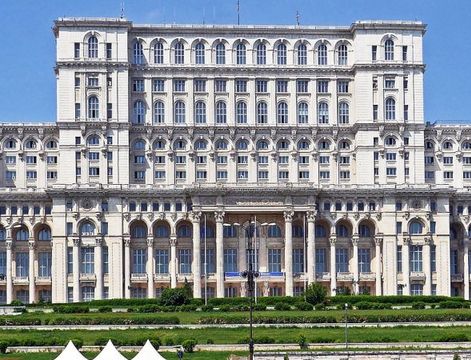
Conclusions of the NMP-REG project
An overview of how the NMP-REG project was carried out and what it achieved.
NMP-REG aims at improving regional policies for delivering innovation in NMP to manufacturing by focusing on policy actions that can support it, using a coordinated action from key players. NMP-REG achieves this through exchanging experiences and Good Practices in a context of interregional activities, communication and stakeholder engagement. Partners develop Action Plans that result in improved policy instruments, more and better-targeted funding, with leverage effect in mobilising private funding; new or better models for innovation delivery thanks to cooperation across the regional innovation chain.
€1,930,151.00
Research and innovation
Additional Year of Activities
After completing its run, the NMP-REG project has successfully taken part in an additional call for proposals launched by Interreg Europe, which aim is to provide new opportunities to the approved projects to exchange experiences on the way the COVID-19 crisis impacts the issue they address and to further improve their regional development policies to better face the current challenges.
With the global health emergency, the NMP industry (nanotechnology & production, new, advanced materials) sought to reconfigure production complying with the new role of advanced materials in a post-Covid society.
Key areas of interventions:
To reach its objectives, NMP-REG has therefore planned to implement the following work plan in 2022:
Final results from Phases 1 and 2
The results that each region has achieved from the implementation of its Action Plan was summarized in a video that was presented during the European Week of Region and Cities 2020. NMP- REG took part in a workshop on the future of clusters in the innovation ecosystem during the week dedicated to Cohesion and Cooperation /12-16 October 2020). The workshop capitalised learnings of the 3 Interreg Europe projects involving more than 20 European regions: CLUSTERIX 2.0, ClusterFY and NMP-REG.
Our stakeholders have their say
We collected video interviews from our regional stakeholders and we created two videos. In the first video, the interviewees tell us why they have decided to actively participate in the project, while in the second one, our stakeholders explain what future benefits they see once the project is finished.
Nano-technologies and new materials (NMP) are a cornerstone of EU policy for innovation and advanced manufacturing. As one of the Key Enabling Technologies, the EU believes that NMP can reverse negative growth trends in manufacturing and foster growth and jobs. The common challenge is to ensure that innovation actors cooperate to deliver research results to the manufacturing sector, with subsequent benefits for regional growth.
NMP-REG groups partners from 5 European regions, who want to face this challenge together. NMP-REG works towards a medium/long-term impact of creating a regional system that can support the manufacturing sector in applying NMP research to create new products/services; create places of work; promote a market for improved and cost-efficient products.
The policy instrument objective is to Strengthen RTD and Innovation (Axis 1). It is divided into 2 priorities.
NMP REG addresses priority 1b “promote innovation, RTD investments and support synergies among enterprises, RTD centers and higher education institutes addressed to developing new products/services, technology transfer, social/eco/open innovation and clusters through smart specialisation, applied research and advanced manufacturing especially in KETs”. Within Priority 1b measures that the project hopes to address are:
- support to innovation services in companies;
- supporting innovative solutions for new products/processes and industrialisation of RTD results;
- support for clusters among enterprises, RTD centers and other stakeholders;
- support to technological advancement through pilot lines, early product validation, large-scale demonstration.
The measures are designed to address the need to improve innovation delivery and capacity of enterprises (especially manufacturing) along the innovation value chain. Cluster organisations and innovation services are considered as key tools to enhance capacity in this field.
However, implementation is hindered by a fragmented manufacturing system with slow access to innovation and a low propensity to innovation. In a highly specialised field such as NMP, examples are needed to demonstrate how innovation delivery can be improved. The instrument provides a framework that must be populated with concrete examples.
SSRC is a key instrument within the Flemish innovation system to ensure transfer from excellent research to industry to stimulate existing / new economic activity.
It comprises policy and financing for 5 Strategic Research Centres, all dedicated to a specific spearhead domain (IMEC nano-electronics and nano-technology VIB Biotechnology VITO energy, environment, materials and terrestrial observation i-Minds ICT and broadband, FLANDERS MAKE advanced manufacturing).
They act as knowledge nodes where hard (labs, equipment) and soft (networking, advice, cooperation) activities, institutions and elements are grouped in a physical and virtual eco-system that connects research to companies.
The starting point for NMP is that public funding should result, quicker than before, in marketable knowledge and societal return on investment of publicly funded R&D. It should, stimulate the (co)creation of spin-offs, start-ups and new economic activities. It should have a leverage effect in mobilising private funding.
New government approaches and models of interaction between key players within SSRC (research centres, companies, knowledge institutes…) are needed.
The NMP-REG can improve the Flanders Make (FM) programme. FM is the Flemish gvt instrument to support companies and industries in Flanders in the domain of “advanced manufacturing”. FM refers to both the policy instrument as the virtual and physical R&D eco-system for advanced manufacturing supported by the Flemish gvt.
NMP-REG addresses the ERDF ROP for the region, in particular Axis 1 - regional innovation strategy (aspects of relevance to nano, new materials and production).
The innovation strategy combines the state’s research, lead market and transfer strategy into a common concept. Criteria are: relevance to national / global markets, contribution to solution of societal challenges, quality of higher education system and capability to deliver technological impact across industry using KET.
The approach promotes smart specialisation in domains with significant socio-economic impact, in which companies / research facilities exhibit potential.
The strategy promotes implementation oriented solutions. R,D&I is dedicated to sustainable solutions to societal challenges: climate protection / acclimation; resource-efficiency / raw materials; safe / healthy food; safe, clean, efficient energy; smart / ecofriendly mobility; health / well-being; safety; participation and social cohesion in course of societal and structural change.
Despite NRW’s focus on translational research infrastructures the results of these efforts are still below average expressed in terms of patents per capita, number of business formations and R&D investments.
NMP-REG addressed ROP NORTE 2020. In particular, it is relevant to Axis 1: Strengthening research, technological development and innovation. Within this Axis, there is a focus on "Promotion of business investment in R&D, developing links and synergies between businesses, research and development centers and higher education." (Investment priority 1b).
Proposed actions the economic value of knowledge and maximum return on technological effort, supporting the link between producers and users of knowledge, promoting technological capabilities of enterprises and creating conditions for a growing incorporation of knowledge in production of tradable goods and services. This support is critical for the regional economy to increase innovation capacity and control over value chain.
Over the last decades there have been efforts to promote links and synergies between businesses/RTD centers/higher education. However, work is needed to define practices and support measures that promote effective ongoing collaboration and not in a case-by-case basis depending much on public financial support available. Mechanisms must be put in place that allow for a true, long term, continuous collaboration among these players, based on real industrial needs promoting this an effective technology procurement market. Using NMP as an example, this can bring a competitive position to the industries involved and consequently to the economic competitive advantage of the Norte region.
The strategy supports the role of research as economic growth engine and it aims to connect Romania to the new priorities of science and technology set by the Europe 2020 strategy and to Horizon 2020.
To fulfill the vision it is based on three pillars: regional and global affirmation- enterprises as key actors of innovation; excellence through internationalisation: RDI sector as opportunity space; regional leadership at the border of science and in technology: breakthroughs in strategic domains.
The strategy envisages the following general objectives:
O1: To increase Romanian economic competitiveness through innovation;
O2: To increase Romanian contribution to the advancement of knowledge;
O3: To increase the role of science in society.
As international statistics, like Innovation Scoreboard, highlights a very low performance of Romania in the R&D domain, the success of the strategy depends on actions with potential to prepare RDI ecosystem to offer a stable and relevant research activity, able to respond to societal challenges.
The strategy links to the RIS3 strategy, which identified NMP as one of the working sectors. It also linked to regional development strategies, including the Bucharest-Ilfov region which includes NMP and innovation delivery. Thus, in increasing economic competitiveness through innovation and knowledge, the strategy offers a clear opportunity to insert NMP as a central pole for growth. This would be a significant improvement to the policy.

An overview of how the NMP-REG project was carried out and what it achieved.

On 22 September 2022 from 09:00 to 15:15 (CET), there will be a hybrid event hosted by INL, the project partner, in Braga in a hybrid mode that will allow both

A webinar of high interest for the project topics was organized last July 4.

Webinar on 'Advanced Materials: Post-Covid Evolution and Skills' the next July 4th!

Online workshop on clusters and the need for post-Covid political support on 1° March 2022.

Two workshops were held by NMP-REG project on the connection between NMP and post-Covid policies.

Two events at the end of November and the beginning of December on project topics related to the current COVID-19 issue.

The final NMP-REG event for Bucharest-Ilfov region was organized online on 23 November 2020.

HIGH-TECH.NRW Demo Day 2020 was held the 13 November 2020 in virtual mode.

The kick-off for the North-Rhine Westphalia acceleration programme HIGH-TECH.NRW was held on 01 September 2020.